Institute of Circuit Technology Annual Symposium
Birmingham, UK, 1st June 2016
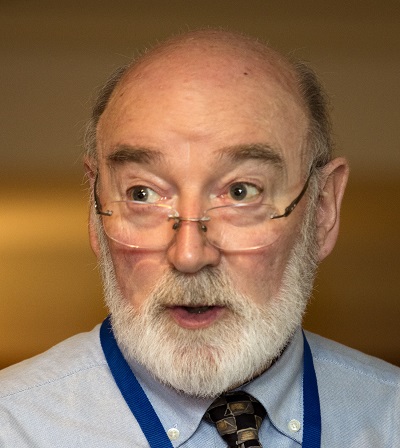 Technical Director Bill Willkie introduced the 42nd Annual Symposium of the Institute of Circuit Technology, at the Motorcycle Museum in Birmingham, UK, commenting upon the success of the recent Foundation Course and acknowledging the sterling efforts of his course tutors, although recognising that some of his longest-standing experts were now retiring. With Institute membership currently standing at 422, there existed a wealth of talent from which he hoped to strengthen his team.
Technical Director Bill Willkie introduced the 42nd Annual Symposium of the Institute of Circuit Technology, at the Motorcycle Museum in Birmingham, UK, commenting upon the success of the recent Foundation Course and acknowledging the sterling efforts of his course tutors, although recognising that some of his longest-standing experts were now retiring. With Institute membership currently standing at 422, there existed a wealth of talent from which he hoped to strengthen his team.
Keynote presentation came from EIPC chairman Alun Morgan, with a highly informative and occasionally humorous insight into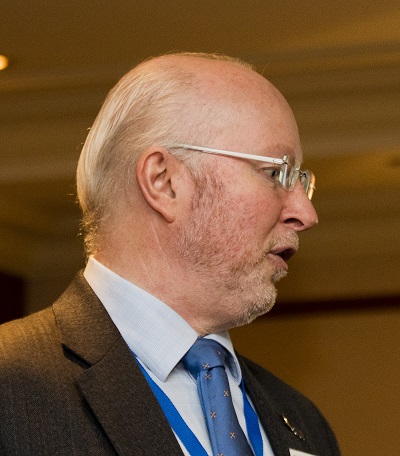 the evolution of automotive electronics, from 1886, when Karl Benz produced the first petrol-engined automobile, which at least had an electrical ignition system, to the present day where, in a world automotive market worth $600 billion, electronics represents 40% of the value. There had been rapid growth over the last decade, as a consequence of developments in lightweight materials, miniaturization, intelligence and electrification.
the evolution of automotive electronics, from 1886, when Karl Benz produced the first petrol-engined automobile, which at least had an electrical ignition system, to the present day where, in a world automotive market worth $600 billion, electronics represents 40% of the value. There had been rapid growth over the last decade, as a consequence of developments in lightweight materials, miniaturization, intelligence and electrification.
The first introduction of electronics into the automobile was in 1930, with Motorola’s car radio, costing over $100 before installation, which was a major job occupying two men for several days and involved substantial modification to the bodywork and interior trim. The installation manual had 28 pages of instructions!
Once in-car entertainment had become established - radio, 8-track stereo, cassette tape and CD player along the way - the next generation of automotive electronics was engine management, with the Bendix Electrojector electronic fuel injection system in 1958, although the early electronic components were not reliable in under-the-hood service. The technology progressed through the 1960s, and the Bosch D-Jetronic became the industry standard in1975. ABS braking evolved through the 1970s and 1980s, became the norm in the 2000s, and was an early example of the synchronisation of a group of inputs to execute a function as a system.
Presently, vehicle electronics could be grouped into four functional domains: powertrain, including engine control, transmission control and start/stop systems; control/body, including air conditioning and climate control, dashboard, wipers, lights, doors, seats, windows, mirrors, cruise control, park distance control, alarm, keyless entry; multimedia/entertainment, including multimedia, infotainment, GPS and in-vehicle navigation systems, CD/DVD players, rear-seat entertainment; and safety, including rollover sensors, airbags, belt pre-tensioners, antilock braking, electronic stability programs, automatic stability controls, adaptive cruise controls, tyre pressure monitoring systems and auto lane keeping. Morgan referred to an announcement be Toyota that they will integrate between 60 and 100 electronic control units into these four functional groups. He discussed layers of increasing integration, from the low-level electronic system platform, up through intelligent actuators and integrated vehicle control, to direct vehicle-to-vehicle interaction and the control of vehicle groups and fleets. The Internet of Things was driving the next generation of development, although there would inevitably be some issues related to the security of data and the protection of privacy that would have to be resolved.
Morgan switched his focus from electronic functionality to road safety trends. European statistics indicated a 26% reduction in annual road fatalities between 2009 and 2013, whereas the USA only achieved 3%, for reasons he could not explain. The fatality reduction forecast for intelligent vehicle safety systems indicated that electronic stability control and lane keeping support had by far the greatest potential for reducing fatalities. Electronic stability programme sensors and systems for anticipating problems could take corrective actions faster, and with more functionality to control the vehicle, than even the most skilful of human drivers. And he illustrated their capabilities with scary but very convincing video case studies. Elegant collision avoidance radar systems were becoming available, having evolved from early prototypes in the mid-1970s, and the achievement of accident-free driving as the objective, and systems were migrating to higher operating frequencies as a means of offering a homogeneous concept for deployment in the mass market at affordable cost. The car was becoming an intelligent vehicle that understood what was going on around it as well as within it. On a salutary note: the more complex the electronics, the more to potentially go wrong - recall figures had shown a steep rise through the 2000s, and were plateaued at an uncomfortably high level.
Recently introduced all-electric vehicles - Morgan’s example was the Tesla-S - were mechanically far simpler than conventional vehicles: in essence, an assembly of batteries constituting the floor pan and an electric motor driving each wheel, with digital control of motors, brakes and steering, and active, traffic-aware cruise control effectively offering “autopilot” capability.
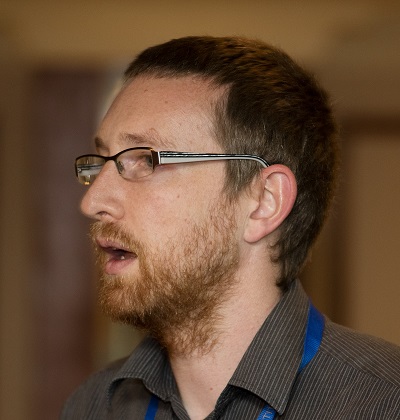 From automotive electronics, attention turned to metal finishing and printed circuit processing: Dr Steven Brewer from C-Tech Innovation described the objectives and achievements of the REPRIME project, funded by the Home Office to investigate the application of advanced ultrasonics to enable the replacement of poisons and explosive precursors used in industrial metal finishing processes and the manufacture of printed circuit boards. The Home Office was conscious that quantities of chemicals which could support terrorist activities were held by SMEs in relatively unsecure locations, and wanted to work with industry associations to find alternative materials via technical solutions rather than by legislation. Objectives were to overcome the barriers to the use of cyanide-free technology, to demonstrate cyanide-free zinc and zinc-nickel plating on an industrial scale, to extend the work to cyanide-free copper, gold and silver plating, to reduce hydrogen peroxide use in the printed circuit industry and to ensure that the technology could be easily and cheaply retrofitted to existing equipment.
From automotive electronics, attention turned to metal finishing and printed circuit processing: Dr Steven Brewer from C-Tech Innovation described the objectives and achievements of the REPRIME project, funded by the Home Office to investigate the application of advanced ultrasonics to enable the replacement of poisons and explosive precursors used in industrial metal finishing processes and the manufacture of printed circuit boards. The Home Office was conscious that quantities of chemicals which could support terrorist activities were held by SMEs in relatively unsecure locations, and wanted to work with industry associations to find alternative materials via technical solutions rather than by legislation. Objectives were to overcome the barriers to the use of cyanide-free technology, to demonstrate cyanide-free zinc and zinc-nickel plating on an industrial scale, to extend the work to cyanide-free copper, gold and silver plating, to reduce hydrogen peroxide use in the printed circuit industry and to ensure that the technology could be easily and cheaply retrofitted to existing equipment.
It had been demonstrated in a pilot line that the use of ultrasound enhanced the deposition rate of cyanide-free zinc electroplating plating chemistries and improved coverage and distribution on complex shapes. Ultrasound enabled the use of reduced concentrations of hydrogen peroxide in etchant solutions used in PCB manufacturing, and gave improved bath life with reduced frequency of replenishment and no adverse effect on downstream processing. The project had been successfully completed, and was being rolled out to industry with continuing support from the Home Office, the Surface Engineering Association and the ICT. Update information was available on the project website www.reprime.co.uk.
Tamara den Daas-Wijnen, Ventec’s Global Account Manager OEM Marketing, introduced the tec-speed™ product portfolio, which positioned Ventec’s  comprehensive range of high-speed low-loss PCB laminates under a clear single-brand identity, symbolised by a sharp-pointed pyramid with standard-loss material at the base and ultra-low-loss at the apex. “Upwards is the direction we are going, as a technology leader - no longer a me-too!” was her comment. She described in detail the characteristics and properties of two examples from the range: tec-speed 3.0 (VT-464L) and tec-speed 6.0 (VT462S). tec-speed 3.0 was a high-Tg halogen-free low-loss material for telecom and networking applications, with Dk 3.7 and Df 0.009 at 50% resin content, which had better electrical properties and was more thermally robust than competitive products.
comprehensive range of high-speed low-loss PCB laminates under a clear single-brand identity, symbolised by a sharp-pointed pyramid with standard-loss material at the base and ultra-low-loss at the apex. “Upwards is the direction we are going, as a technology leader - no longer a me-too!” was her comment. She described in detail the characteristics and properties of two examples from the range: tec-speed 3.0 (VT-464L) and tec-speed 6.0 (VT462S). tec-speed 3.0 was a high-Tg halogen-free low-loss material for telecom and networking applications, with Dk 3.7 and Df 0.009 at 50% resin content, which had better electrical properties and was more thermally robust than competitive products.
She quoted reliability results for a 32-layer 4 mm thick construction with 0.3mm holes at 0.8 and 1.0 mm pitch, withstanding 10 lead-free reflow cycles at 280°C without failure, and explained how Ventec’s glass treatment and resin-impregnation procedure led to remarkable improvements in CAF resistance. Similar thermal reliability results were achieved with the ultra-low-loss tec-speed 6.0 material. The electrical performance characteristics of tec-speed 6.0 were interesting, particularly the fact that at 10GHz its Df decreased with increasing resin content - a consequence of the resin having lower dielectric constant than the glass.
Ms den Daas-Wijnen concluded her presentation by commenting that the whole of Ventec’s supply chain was accredited to AS9100C - the only laminate manufacturer able to make that claim. And the Ventec App was now available, with instant access to data for the whole product portfolio.
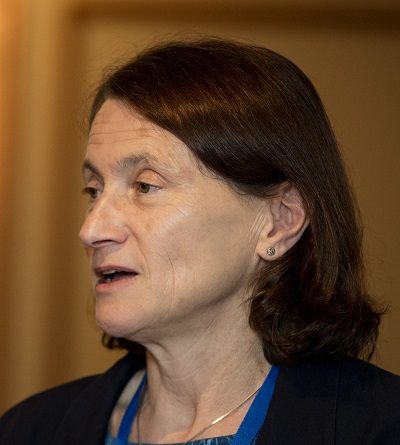 Industry analyst and ICT Council member Francesca Stern delivered her annual outlook on the global PCB and electronics industry, reviewing world trends in electronics and PCB production, and how they related to the industry in the UK.
Industry analyst and ICT Council member Francesca Stern delivered her annual outlook on the global PCB and electronics industry, reviewing world trends in electronics and PCB production, and how they related to the industry in the UK.
Global electronics production, including components, for 2015 totalled $US 1861 billion, with China accounting for 38%, the rest of Asia-Pacific 22%, Japan 7%, the Americas 18% and Western Europe 11%. Principal end-use markets were cell-phone, standard PC, digital TV and automotive. Standard PCs and tablets were showing negative growth, but there was continuing growth in medical electronics and huge growth in Internet-of-Things applications.
Electronic equipment production in Europe and North America remaining strong in 2015 in the industrial, instrumentation and automation sectors. There had been little growth in the military sector, but it was forecast to increase slightly in 2016. Growth in infrastructure equipment for 4G long-term-evolution had slowed in 2015, but industrial and instrumentation electronics production grew in China. UK electronics production, which had grown 3% in 2014, had fallen by1% in 2015.
PCB production in Europe had declined by 3% and some recovery, but no growth, was expected in 2016. Growth had been low in North America and there had been further decline in Japan. Exchange rate fluctuations could lead to distortions of the figures; for example, measured in domestic currencies, there had been positive growth in Asia, but negative if measured in US dollars. The outlook for 2016 was that it would be similar to 2015, with a recovery towards the end of the year, and the next surge expected in 2017-2018.
Ms Stern commented on recent updates to the Open General Export Licence (OGEL) by the UK government, which made it easier to export PCBs to most worldwide destinations for military contracts, and other more sensitive counties including China for aerospace and industrial-grade PCBs. The Export Control Organisation (ECO) was currently looking for feedback from PCB companies as to how these changes were affecting their business.
Dr Andrew Ballantyne from University of Leicester presented a review of the applications of deep eutectic solvents in PCB surface finish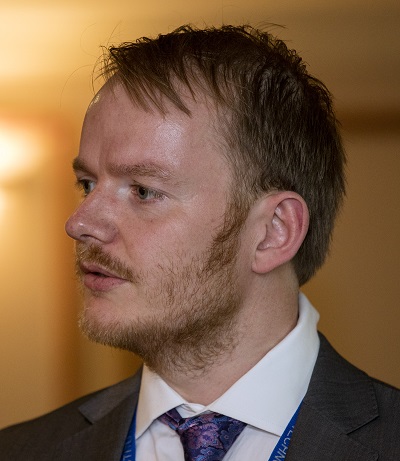 ing and electronics assembly, and an update of the MACFEST project. He explained that deep eutectic solvents are types of ionic liquids in which organic cations are combined with halide anions and complexing agents to make an anionic complex. The specific example used in his research work was composed of ethylene glycol and choline chloride in 2:1 molar ratio and known as Ethaline 200, which was relatively inexpensive and environmentally benign. Ethaline 200 had low vapour pressure and good thermal stability, and exhibited unusual solvation properties with metal salts. Its benefits had been demonstrated in metal finishing applications such as electropolishing, electroplating and immersion plating, as well as metal recycling and energy storage. It had also shown remarkable properties as a flux, enabling soldering direct to electroless nickel and other difficult-to-solder metal surfaces.
ing and electronics assembly, and an update of the MACFEST project. He explained that deep eutectic solvents are types of ionic liquids in which organic cations are combined with halide anions and complexing agents to make an anionic complex. The specific example used in his research work was composed of ethylene glycol and choline chloride in 2:1 molar ratio and known as Ethaline 200, which was relatively inexpensive and environmentally benign. Ethaline 200 had low vapour pressure and good thermal stability, and exhibited unusual solvation properties with metal salts. Its benefits had been demonstrated in metal finishing applications such as electropolishing, electroplating and immersion plating, as well as metal recycling and energy storage. It had also shown remarkable properties as a flux, enabling soldering direct to electroless nickel and other difficult-to-solder metal surfaces.
The MACFEST Project, which was co-funded by Innovate UK, aimed at producing a “Universal Surface Finish” for electronics, capable of reflow soldering and wire bonding with gold, copper and aluminium. Required attributes were high reliability, good planarity and long shelf life. Deep eutectic solvent technology was being employed to improve functionality and to reduce safety and environment concerns. The first 15 months of the 24-month project had been completed.
Using a proprietary electroless nickel with an amorphous nodular structure and 8% phosphorus to form the base layer, immersion palladium had been deposited from Ethaline at 80°C to a thickness of 70-100 nanometres in 30 minutes. The palladium deposit had been over-plated with gold from a second Ethaline-based formulation at 50°C for 9-15 minutes. The source of gold could be either gold chloride or sodium gold thiosulphate, and bright uniform deposits had consistently been achieved from a chemistry free from acid and cyanide. This “ENIPIG” - electroless nickel, immersion palladium, immersion gold - finish had shown excellent solderability, with no evidence of “black pad” or “mud-cracking” effects on the nickel surface associated with acid attack when traditional aqueous chemistries were used.
 The final speaker was ICT Chairman Dr Andrew Cobley, from Coventry University, who reviewed current research projects in which the ICT was a collaborator. REPRIME and MACFEST had been discussed in earlier presentations, but two new projects were in their early stages.
The final speaker was ICT Chairman Dr Andrew Cobley, from Coventry University, who reviewed current research projects in which the ICT was a collaborator. REPRIME and MACFEST had been discussed in earlier presentations, but two new projects were in their early stages.
The first was Selective Electroless Catalysis in a Magnetic Field (surprisingly, no acronym!), led by Coventry University. The concept was to use a magnetic field to selectively catalyse a material prior to electroless plating, using a template of magnetised iron rods placed against the reverse face of a thin substrate to attract catalyst selectively to the opposite surface. Proof of concept was being funded by Higher Education Innovation Funding (HEIF). A patent had been filed, and a PhD student would be working full-time on the project from September 2016. Other sources of funding, for example Horizon 2020, were being explored.
Acronyms again! The second project, SYMETA - SYnthesizing 3D METAmaterials for RF, microwave and THz applications - was being led by Loughborough University and funded by EPSRC. This project was looking at creating new materials for additive processes, to form substrates and conductive meta-atoms, and would take a radical new approach to high frequency circuit manufacture. Developing a more rational and sustainable use of materials would reduce waste, timescales and cost of manufacturing processes.
The main contribution of the ICT to these projects was as a dissemination partner, and the benefits of involvement were that the ICT could influence the direction of research and quickly inform its members of the latest R&D developments, as well as creating opportunities for ICT members to engage in and obtain funding for research.
Dr Cobley wrapped up the proceedings, thanking speakers for sharing their knowledge and experience, delegates for their attention, Ventec Europe for their generous support, and Bill Wilkie for once again organising a splendid event. Delegates made the most of the networking opportunity, and an impressive number of motorcycle enthusiasts emerged from the group to spend a while admiring the exhibits in the museum before departing.
I am grateful to Alun Morgan for allowing me to use his photographs.
Pete Starkey
I-Connect007
June 2016
